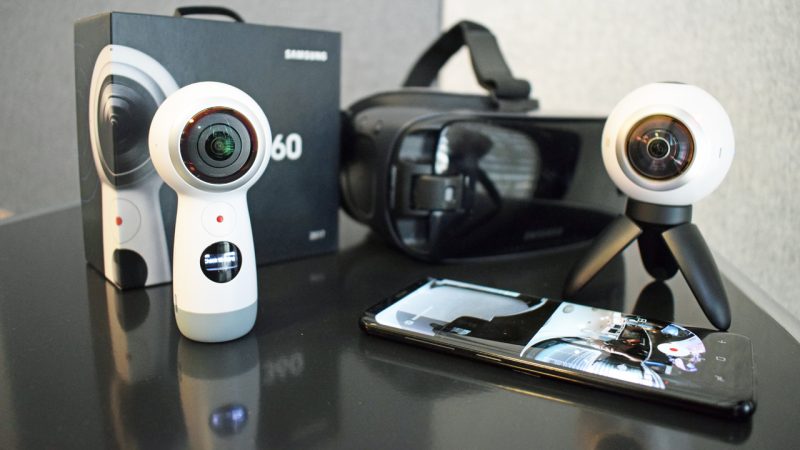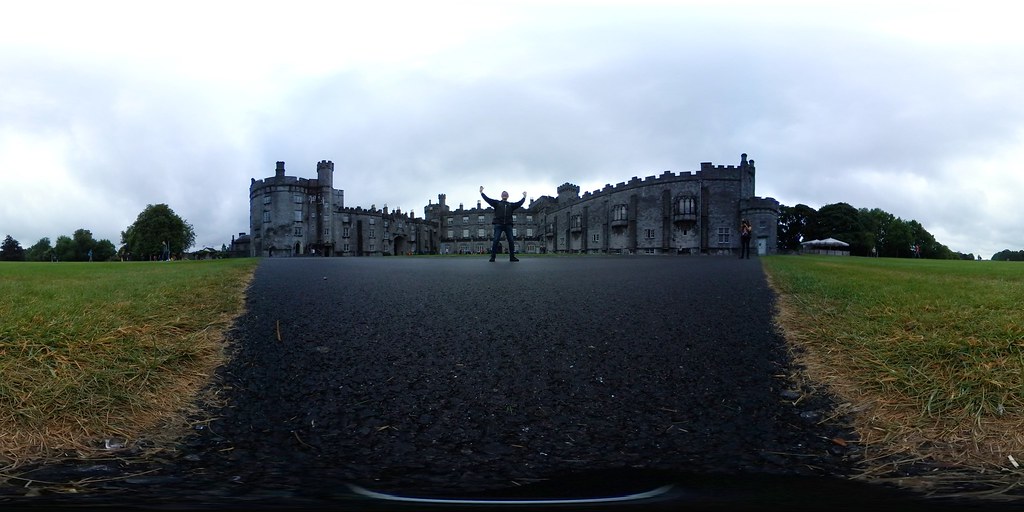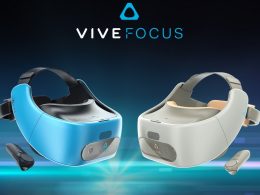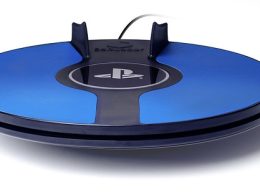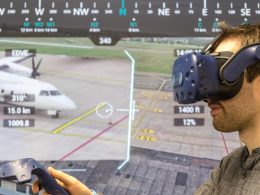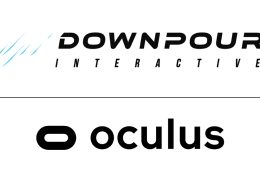The Gear 360 was already available in spherical form with an additional mini tripod. Less portable was the size of the first spherical Samsung camera. Compared to its predecessor, however, the new one for 240 francs in a stick-shaped design only offers two 8.4-Mpx eyes instead of two 15-Mpx sensors. In addition, there is a drop in light sensitivity. While the 2016 version comes with an aperture of f/2.2, this has shrunk to f/2.0 on the 2017 model. Samsung Switzerland was kind enough to give me last year's model for the holidays for comparison, after I had already bought the Gear 360 (2017). Why I now regret my purchase and will swap the new camera for the old spherical snapper straight away, you can read here.
In the picture: left: Gear 360 (2016); right: Gear 360 (2017)
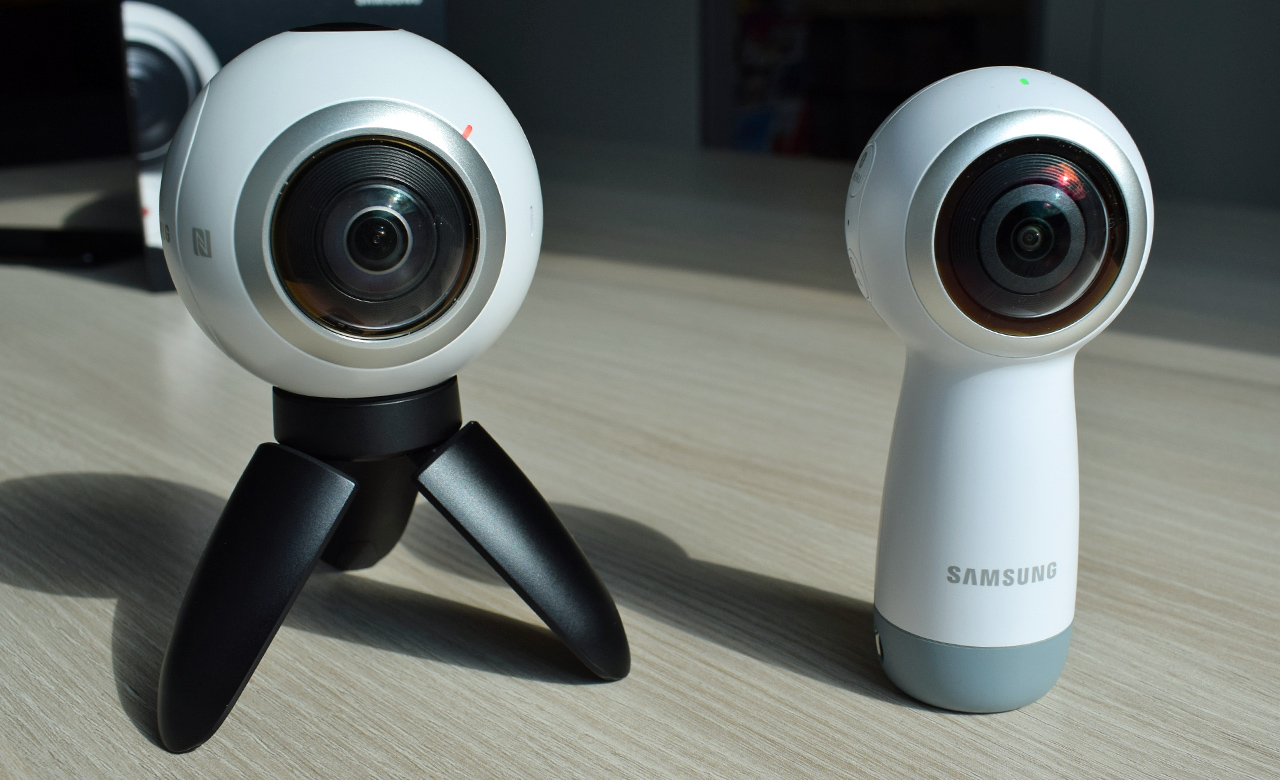
Compactness has its price!
The photos and videos, for which you don't necessarily have to reach for your smartphone to release the shutter, are generally a little less sharp than those of the predecessor. If you ask me, no 360-degree camera has yet been able to convince me with dark pictures. In pictures, the difference is quite noticeable due to the lower number of pixels per lens. You don't even have to put on VR goggles to see this - you can also see it when uploading to a social network like Flickr or Facebook. You can see clear noise in indoor shots. Like here, where I'm standing in the middle of the Guinness Beer Museum in Dublin.
Click into the picture for the 360 degree view
The new HDR mode does not bring any real added value. With this mode, you can now take two consecutive pictures at different ISO values, whereas before you could simply take several pictures one after the other. The photos are also still a little grainy in bad weather conditions.
Click into the picture for the 360 degree view
The Grey in the Rush
Not much has been improved in terms of video quality. The resolution is now 3840 x 1920 pixels (at 30 frames per second) instead of 4096 x 2160 pixels. In rather quiet scenes - by the way, I highly recommend a mini tripod for floor placement to all new users - the deterioration in quality of the 2017 model is still forgivable. When there is a lot of movement, for example on a bus ride, the result on a Gear VR but can quickly trigger the urge to vomit. Note: Even more so for later VR enjoyment, you should never walk around with a 360-degree camera, but simply place it on the floor and film in at least 4K. Whether placed on the floor or not, blurred contours in moving images are clearly noticeable in these examples that I uploaded to YouTube.
360-degree video: Click and hold for different angles
The audio quality of the Gear 360 (2017) is not bad, by the way. However, as I learned at a journalism course with Ringier's head of video, an additional microphone is always recommended for VR recordings if you don't want to have all the ambient noise in the video during a dialogue or monologue.
It gets better with light
The snapshots are better in bright daylight, although here too the quality has dropped a little compared to the 2016 model.
Click into the picture for the 360 degree view
Here, just so you've seen it: a shot in rather dark weather with last year's model.
Click into the picture for the 360 degree view

Memory-heavy affair
Unfortunately, the practical mini tripod of last year's version is not included. However, thanks to the standard camera winch, you can use any tripod. You absolutely need a fast microSD card; otherwise the camera will refuse to work. The "Samsung Evo+ UHS-I" in the 128 GB version is a good choice (for 69 Swiss francs, e.g. at digitec.ch). To download the individual shots and stitch them together, you have to reach for your smartphone again via Bluetooth. As with other 360-degree cameras, you can then transfer the videos and photos to the picture gallery of the app - which, by the way, can quickly take half an hour or more for longer five-minute videos. When saving, a half-minute video in 2560 x 1280 pixels devours around 200 MB; individual images in 5472 x 2736 pixels around 1.9 MB. With the old, better camera, photos are "heavy" around 2.7 MB (at 7200 x 3600 pixels).
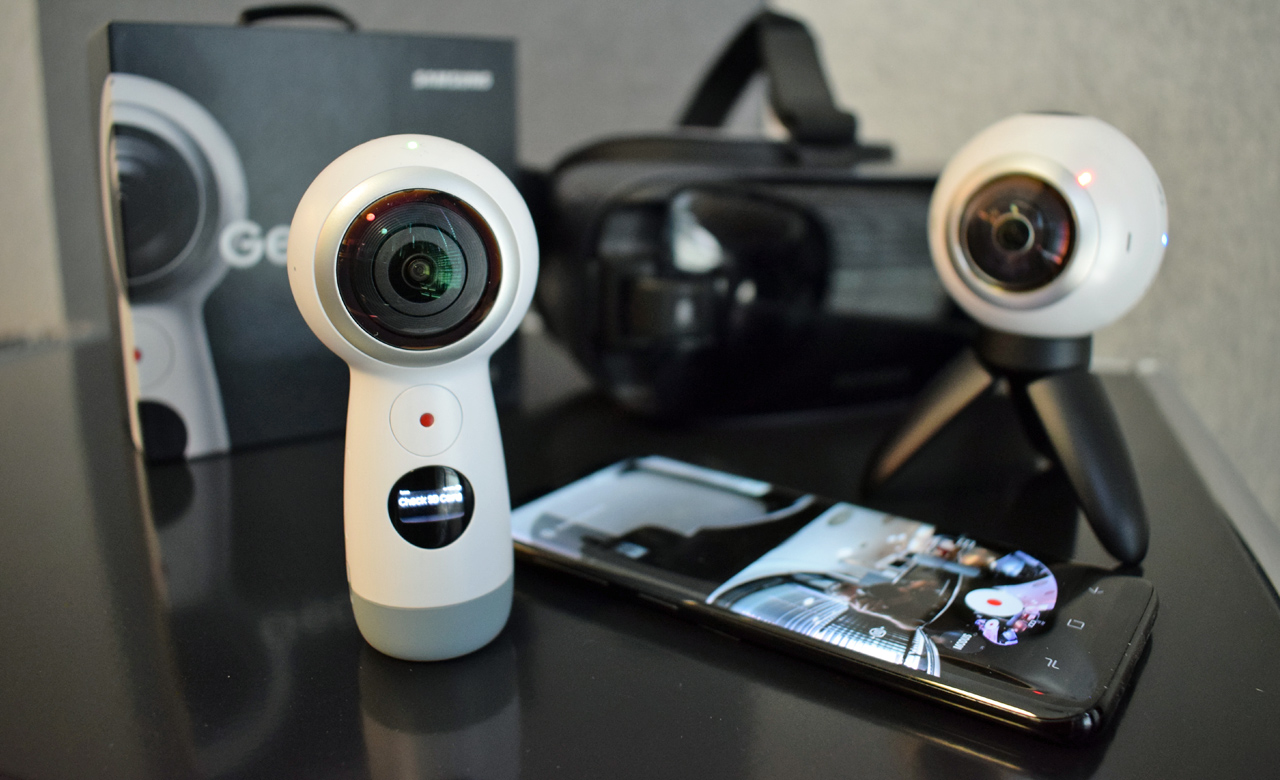
Transferring to the mobile phone is a bit of a drain on the smartphone battery. Speaking of smartphones: You can also use the Gear 360 (2017) with an iPhone. Unfortunately, the smartphone view while filming only works on Android smartphones. Some functions will probably be made available for Apple at a later date. By the way, I ran the obligatory Gear 360 Manager App not on every Android phone. For example, I had problems with an older Nexus 6P that refused to install. So it's better to find out about compatibility before you buy. Samsung lists the following smartphones as compatible: Galaxy S8, S8+, S7, S7 Edge, Note5, S6, S6 Edge, S6 Edge+, A5/A7 (2017) from Android 5.0 and iPhone 7, 7+, 6S, 6S+, SE from iOS 10.0.
A small bonus of the Gear 360 (2017) is the live streaming function in 360 degrees, which now also enables spherical real-time videos on Facebook. However, the image quality on both Facebook and YouTube is limited to 1920 x 960 pixels at 30 frames per second.
Fun: Holiday photos in VR!
With Samsung, you also benefit from the Gear VR glasses. All you have to do in the Samsung ecosystem: You put on the Gear VR and download the Oculus Video and Oculus Photo app. For me, on the Galaxy S8, the photos and videos were automatically found in the app folder of the Gear 360. I didn't even have to rename files or move them to another folder. The panoramic view in the Gear 360 panorama photos is really fun in VR. You stand around the best and turn around in circles. In any case, from now on I'll be taking my Gear VR along more often for a round of holiday photos.
Hint: The Gear 360 (2016) works exclusively with some Samsung high-end smartphones like the S7 (Edge) and up.





